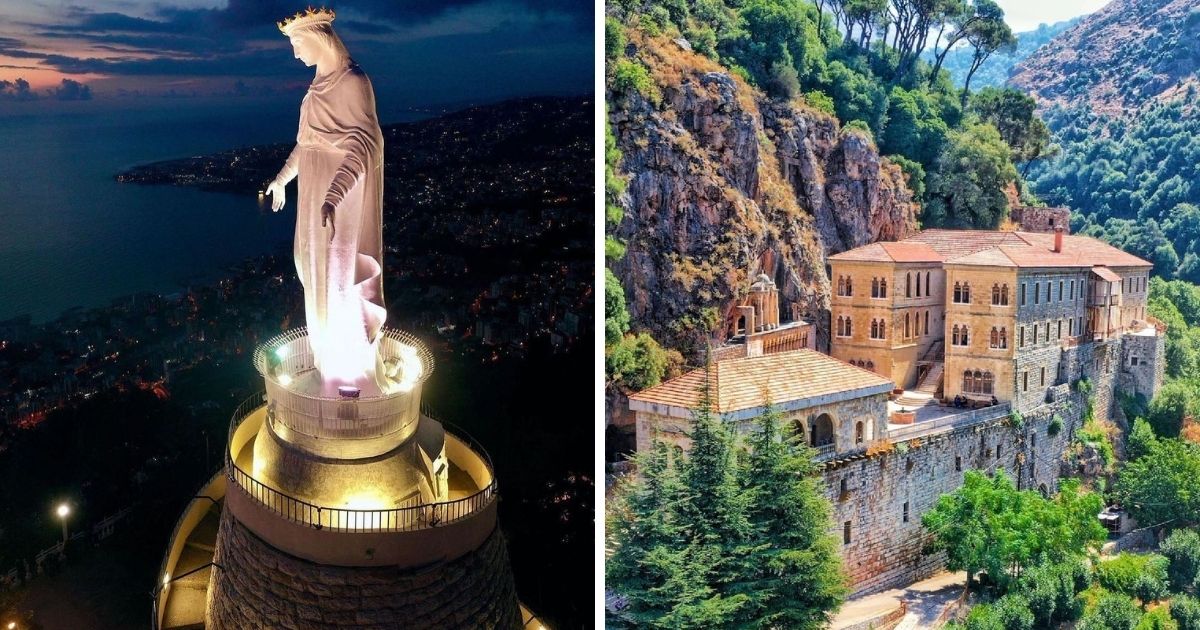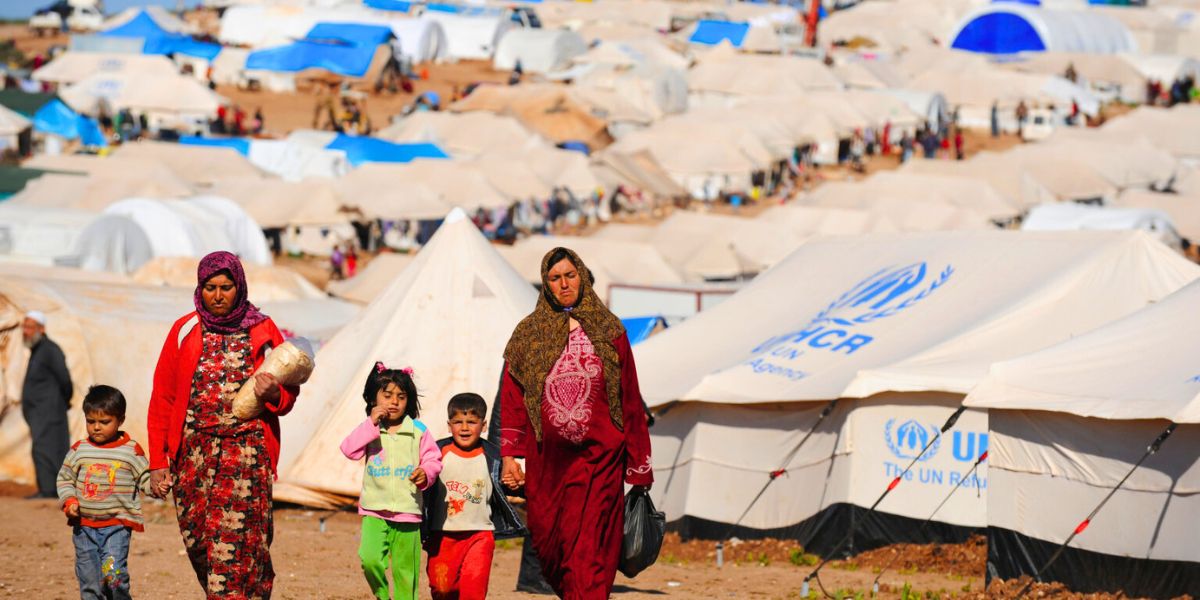Lebanon is home to countless religious sites that are worth visiting for their spiritual and historical significance, especially during the Lent season.
Some of these sites date back in time to early Christianity and one in particular to the time when Jesus dwelled in our land and performed his first recorded miracle.
From ancient to historical, here are some of these sacred sites worth visiting during this Lent season in Lebanon.
#1 Deir Saydet Hamatoura, Qadisha Valley
Built out of the rocky hollow of a high cliff, on the northern side of the village of Kousba, the ancient monastery of Our Lady of Hamatoura is perched on a high cliff overlooking the Qadisha Valley.
It is an astoundingly old monastery with its church of Saint Jacob dating back to the 4th century. The monastery faced destruction by the Mamlukes multiple times, however, it was rebuilt time and time again.
To get to this beautiful temple is a tough climb, but it is well worth the little effort to reach the top because what awaits is breathtaking.
#2 Lady Of Lebanon, Harissa
One of Lebanon’s landmarks and probably one of the most visited religious sites by people of all faith, the iconic Lady of Lebanon stands distinguishable from miles away, stretching her arms in protection and motherly welcome.
The phenomenal statue is said to weigh 15 tonnes, made from bronze and painted in white. It was completed at the end of the 19th century and inaugurated in 1908 on that piece of land donated by the Maronite Khazen family.
The view is breathtaking and more so when you get to climb the steps of the statue, which tops a small chapel.
Adjacent to the shrine, there is a massive modern cathedral of concrete and glass, which was completed in 1992.
#3 Mar Antonios, Qozhaya
Dedicated to Saint Anthony the Great, the monastery is commonly called Qozhaya, a Syriac name that means The Treasure of Life.
Qozhaya is considered to be one of the oldest monasteries in the valley of Qadisha with several hermitages attached to it.
The monastery is home to the first-ever printing press in the Middle East the priests used to print bibles and religious books. It dates back to 1584.
#4 Deir El-Balamand, Koura
Nicknamed The Pearl of the East, Deir El Balamand is a monastery for the Greek Orthodox Church of Antioch founded in 1157 in the northern town of Balamand, which was previously the Crusader County of Tripoli in the Koura District.
Cistercian monks founded the monastery and maintained it until the Mamluk conquest in 1289. The monastery was reclaimed by Greek Orthodox monks in 1610.
#5 Deir Mar Maroun, Hermel
The Monastery of Saint Maron (or the Cave of the Monks) is an impressive ancient site carved entirely out of stone on a cliff by monks in the 2nd century AD. It then became the residence of Saint Maroun and his followers in the 4th century AD during the establishment of the Maronite denomination in Lebanon.
#6 Saint George Greek Orthodox Cathedral, Beirut
This cathedral is the oldest in Beirut, having been built over and over again. The Anastasis cathedral was the first to be built in this sacred location during the 5th century AD.
#7 Deir Saydet El-Nourieh, Hamat
Saydet El-Nourieh or “Lady of the Light” was believed to be built by two sailors who were lost at sea and went into intensive prayers to Virgin Mary for salvation. A light appeared at a distance, leading them to the shore of Theoprosopon near modern-day Chekka.
They followed the light up to the top of the cliff where they then built the church for her in gratitude. Through time, the church expanded into a monastery, becoming a religious site, with a breathtaking view.
#8 Deir El Natour, Anfeh
It is believed to be built by a rich man who committed adultery. The story goes that, filled with painful regret, the man chained himself to a cavern and threw the key into the sea. He lived off fish brought to him by fishermen until one day he found the key in one of the fish.
After that, he built a convent dedicated to Virgin Mary. This monastery was later built by the hands of the Cistercians.
#9 Mar Charbel – Annaya
Deir Mar Charbel is probably one of the most visited religious sites in Lebanon. Mar Charbel’s notoriety for responding to healing prayers has long crossed the oceans with countless reported miracles around the world.
His monastery in Annaya is sought by local and foreign believers whether to seek healing or to express gratitude for received miracles.
#10 The Biblical Grotto of Qana
The Grotto of Qana holds religious and biblical significance. It was the location where Jesus performed his first miracle, turning water into wine during a wedding at the request of his mother.
The Grotto of Qana cave is also said to have sheltered the first persecuted Christians in the region. It has become a place for worship consecrated to Virgin Mary since the early 2000s and is visited by pilgrims from all over the world.
Related: 10 Most Impressive Historical Monasteries in Lebanon.

















